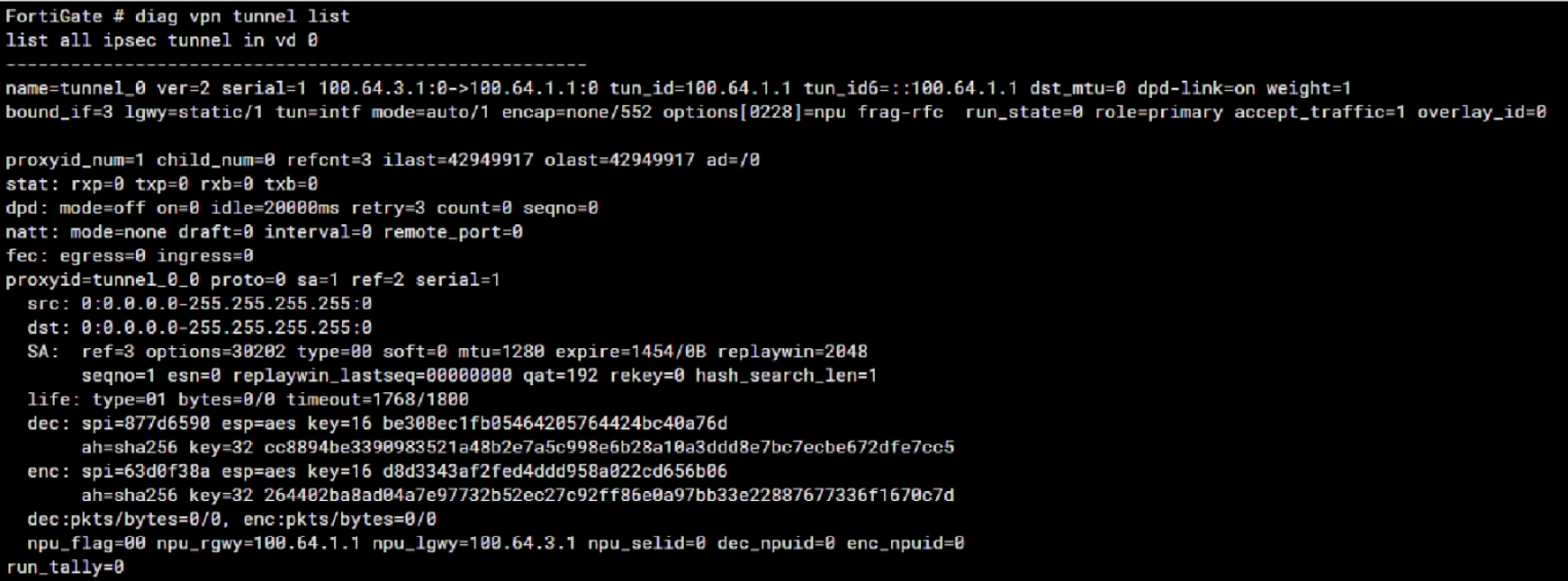The neighbor-group command can be applied in both Internal BGP (IBGP) and External BGP (EBGP). This allows for grouping of neighbor configurations to simplify management. Additionally, it is used with the neighbor-range parameter to apply these settings to a range of neighbor IP addresses, thus streamlining the configuration process.

What two conclusions can you draw from the command output? (Choose two.)
The IKE version being used is 2, as indicated by 'ver=2'. Both IPsec SAs are loaded on the kernel, as shown by 'npu-flag=00'. Dead peer detection is disabled ('dpd: mode=off'), and forward error correction is also disabled ('fec: egress=0 ingress=0').
Only some IKE version 2 packets are considered fragmentable and the reassembly timeout default value is 30 seconds. Fragmentation of IKEv2 packets is typically done to address issues with payloads that exceed the IP MTU size, ensuring the packets can pass through network devices more reliably.
What can the administrator do to fix this problem?
When configuring a FortiGate HA cluster, if switches continue to send traffic to the former primary device after a failover, the administrator should configure 'set link-failed-signal enable' under 'config system ha' on both cluster members. This setting forces the primary device to shut down all interfaces except management and HA for a brief period, simulating a link failure and prompting the switches to update their MAC address table entries. This solution ensures the switches direct traffic to the new primary device.

What two conclusions can you draw from this BGP summary? (Choose two.)
The BGP session with the peer 10.127.0.75 is established, as indicated by the uptime and the received prefixes. External BGP (EBGP) exchanges routing information because the AS numbers of the neighbors are different from the local AS number, signifying EBGP sessions.